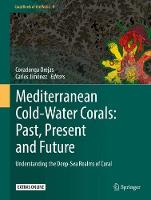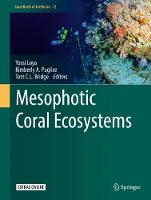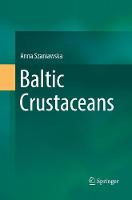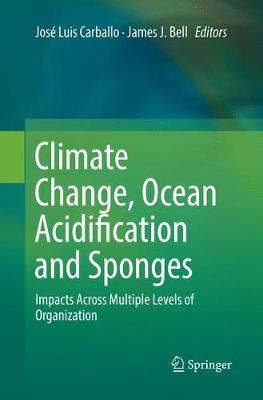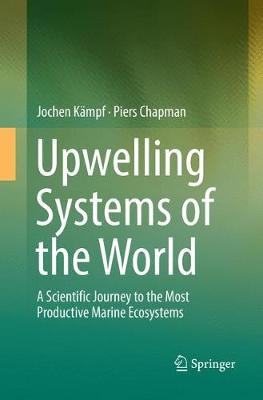Cnidaria, Past, Present and Future
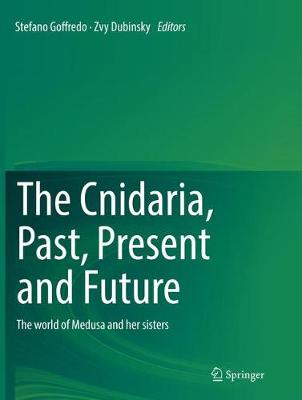 -15%
portes grátis
-15%
portes grátis
Cnidaria, Past, Present and Future
The world of Medusa and her sisters
Dubinsky, Zvy; Goffredo, Stefano
Springer International Publishing AG
06/2018
855
Mole
Inglês
9783319810096
15 a 20 dias
3001
Evolution, and Systematics.-1. Emergence and evolution of early life in the
geological environment- 2. Integrated evolution of cnidarians and oceanic
geochemistry before and during the Cambrian explosion- 3. Origin and early
diversification of phylum Cnidaria: key macrofossils from the Ediacaran system
of North and South America.- 4 The new systematics of Scleractinia: integrating
molecular and morphological evidence- 5 Ceriantharia in current systematics:
life cycles, morphology and genetics- 6 Origin and evolution of the nervous
system considered from the diffuse nervous system of cnidarians. -Part 2 Zoogeography.- 7 Zoogeography of
Hydrozoa: past, present and a look to the future. -8 Diversity and distribution
of Octocorallia.-9 Diversity and distribution of Actiniaria. -10 Cnidarian
alien species in expansion. -Part 3
Calcification.-11 Calcification in the Cnidaria through time: an overview
of their skeletal patterns from individual to evolutionary viewpoints. -12 A
non-traditional stable isotope perspective on coral calcification. -13
Influences of coral intra-skeletal organic matrix on calcium carbonate
precipitation. -14 From molecules to morphologies, a multiscale modeling
approach to unravel the complex system of coral calcification. -Part 4 Reproduction and Population Ecology.-15
Reproduction of sea anemones and other hexacorals. -16 Sexual reproduction in
stony corals and insight into the evolution of oogenesis in Cnidaria. -17
Sexual reproduction of Mediterranean scleractinian corals. -18 Brooding corals:
planulation patterns, larval behavior, and recruitment dynamics in the face of
environmental change. -19 Larval dispersal and population connectivity in
anthozoans. -20 Population dynamics of temperate corals in a changing climate. -Part 5 Symbiosis. -21 Microbial
interactions on coral surfaces and within the coral holobiont. -22 Association
of coral-microbes, and the ecological roles of microbial symbionts in corals. -23
From one to many: the population genetics of cnidarian-Symbiodinium symbioses. -24
General ecological aspects of the Anthozoa -Symbiodinium interactions in the
Mediterranean Sea. -25 Cnidarians and their polychaete symbionts. -26 Cassiopea
and its zooxanthellae. -27 Sea anemones and anemonefish: a match made in
heaven. -Part 6 Immune system. -28
Cnidarian immunity: from genomes to phenomes. -Part 7 Photobiology and Circadian Clock.-29 Corals and light: from
energy source to deadly threat. -30 The photobiology of Symbiodinium spp.:
linking physiological diversity to the implications of stress and resilience. -31
Current understanding of the circadian clock within Cnidaria. -Part 8 Global Climate Change. -32
Survey of cnidarian gene expression profiles in response to environmental
stressors; summarizing 20 years of research, where are we heading for?. -33
Thermal-stress response of coral communities to climate change. Robert van
Woesik*, C. Cacciapaglia, C. J. Randall, Florida Institute of Technology, USA.-
34 Ecological and evolutionary considerations regarding corals in a rapidly
changing environment. -35 The impact of climate change and the environment on
coral growth. -36 Cold-water corals in an era of rapid global change: are these
the deep ocean's most vulnerable ecosystems?.-Part 9 Medical Aspects and Applications.- 37 Unusual cnidarian
envenomations. -38 Envenomation by cnidarians and renal injuries. -39 Cubozoan
envenomations: clinical features, pathophysiology and management. -40 The role
of Cnidaria in drug discovery. -41 How venom from the magnificent sea anemone,
Heteractis magnifica, kills breast and lung cancer cells. -42 Leveraging
nematocysts toward human care. -43 Coral scaffolds in bone tissue engineering
and bone regeneration. -Part 10
Management and Conservation.- 44 Population genetic structure of Corallium
rubrum in the Mediterranean Sea: diversity, phylogeography, and bathymetric
patterns. -45 Molecular forensics into the sea: how molecular markers can help
to struggle against poaching and illegal trade in precious corals? .- 6
Advances in management of precious corals to address unsustainable and
destructive harvest techniques. -47 Conservation and restoration of coral reefs
under climate change: strategies and practice. -Part 11 In Myth and Art.- 48 The myth of the Lernaean Hydra.-49 The
myth of Medusa: Benvenuto Cellini and the Loggia de Lanzi in Florence.-50
Medusa and Perseus, and the relationship between myth and science. -51
Beheading the Gorgon: myth, symbolism and appropriation.
Evolution, and Systematics.-1. Emergence and evolution of early life in the
geological environment- 2. Integrated evolution of cnidarians and oceanic
geochemistry before and during the Cambrian explosion- 3. Origin and early
diversification of phylum Cnidaria: key macrofossils from the Ediacaran system
of North and South America.- 4 The new systematics of Scleractinia: integrating
molecular and morphological evidence- 5 Ceriantharia in current systematics:
life cycles, morphology and genetics- 6 Origin and evolution of the nervous
system considered from the diffuse nervous system of cnidarians. -Part 2 Zoogeography.- 7 Zoogeography of
Hydrozoa: past, present and a look to the future. -8 Diversity and distribution
of Octocorallia.-9 Diversity and distribution of Actiniaria. -10 Cnidarian
alien species in expansion. -Part 3
Calcification.-11 Calcification in the Cnidaria through time: an overview
of their skeletal patterns from individual to evolutionary viewpoints. -12 A
non-traditional stable isotope perspective on coral calcification. -13
Influences of coral intra-skeletal organic matrix on calcium carbonate
precipitation. -14 From molecules to morphologies, a multiscale modeling
approach to unravel the complex system of coral calcification. -Part 4 Reproduction and Population Ecology.-15
Reproduction of sea anemones and other hexacorals. -16 Sexual reproduction in
stony corals and insight into the evolution of oogenesis in Cnidaria. -17
Sexual reproduction of Mediterranean scleractinian corals. -18 Brooding corals:
planulation patterns, larval behavior, and recruitment dynamics in the face of
environmental change. -19 Larval dispersal and population connectivity in
anthozoans. -20 Population dynamics of temperate corals in a changing climate. -Part 5 Symbiosis. -21 Microbial
interactions on coral surfaces and within the coral holobiont. -22 Association
of coral-microbes, and the ecological roles of microbial symbionts in corals. -23
From one to many: the population genetics of cnidarian-Symbiodinium symbioses. -24
General ecological aspects of the Anthozoa -Symbiodinium interactions in the
Mediterranean Sea. -25 Cnidarians and their polychaete symbionts. -26 Cassiopea
and its zooxanthellae. -27 Sea anemones and anemonefish: a match made in
heaven. -Part 6 Immune system. -28
Cnidarian immunity: from genomes to phenomes. -Part 7 Photobiology and Circadian Clock.-29 Corals and light: from
energy source to deadly threat. -30 The photobiology of Symbiodinium spp.:
linking physiological diversity to the implications of stress and resilience. -31
Current understanding of the circadian clock within Cnidaria. -Part 8 Global Climate Change. -32
Survey of cnidarian gene expression profiles in response to environmental
stressors; summarizing 20 years of research, where are we heading for?. -33
Thermal-stress response of coral communities to climate change. Robert van
Woesik*, C. Cacciapaglia, C. J. Randall, Florida Institute of Technology, USA.-
34 Ecological and evolutionary considerations regarding corals in a rapidly
changing environment. -35 The impact of climate change and the environment on
coral growth. -36 Cold-water corals in an era of rapid global change: are these
the deep ocean's most vulnerable ecosystems?.-Part 9 Medical Aspects and Applications.- 37 Unusual cnidarian
envenomations. -38 Envenomation by cnidarians and renal injuries. -39 Cubozoan
envenomations: clinical features, pathophysiology and management. -40 The role
of Cnidaria in drug discovery. -41 How venom from the magnificent sea anemone,
Heteractis magnifica, kills breast and lung cancer cells. -42 Leveraging
nematocysts toward human care. -43 Coral scaffolds in bone tissue engineering
and bone regeneration. -Part 10
Management and Conservation.- 44 Population genetic structure of Corallium
rubrum in the Mediterranean Sea: diversity, phylogeography, and bathymetric
patterns. -45 Molecular forensics into the sea: how molecular markers can help
to struggle against poaching and illegal trade in precious corals? .- 6
Advances in management of precious corals to address unsustainable and
destructive harvest techniques. -47 Conservation and restoration of coral reefs
under climate change: strategies and practice. -Part 11 In Myth and Art.- 48 The myth of the Lernaean Hydra.-49 The
myth of Medusa: Benvenuto Cellini and the Loggia de Lanzi in Florence.-50
Medusa and Perseus, and the relationship between myth and science. -51
Beheading the Gorgon: myth, symbolism and appropriation.





